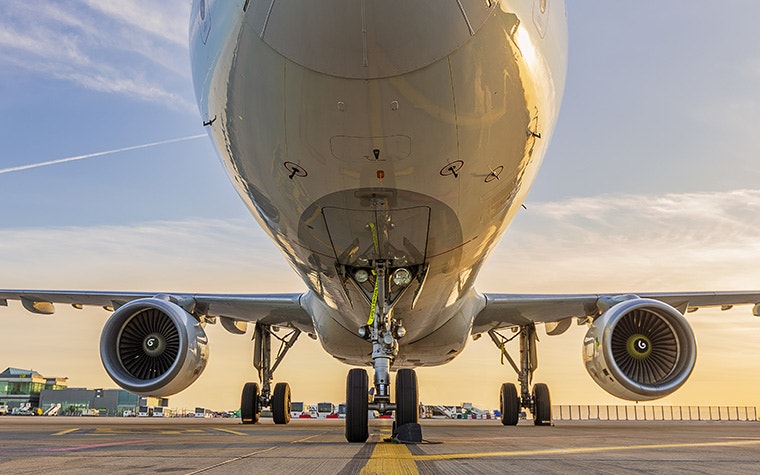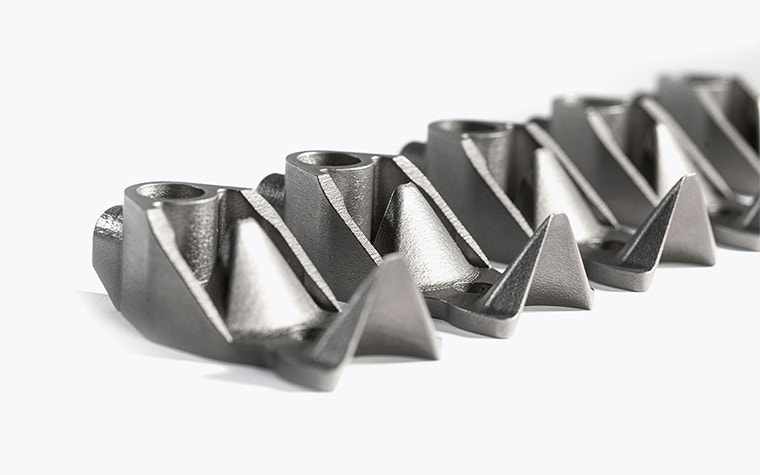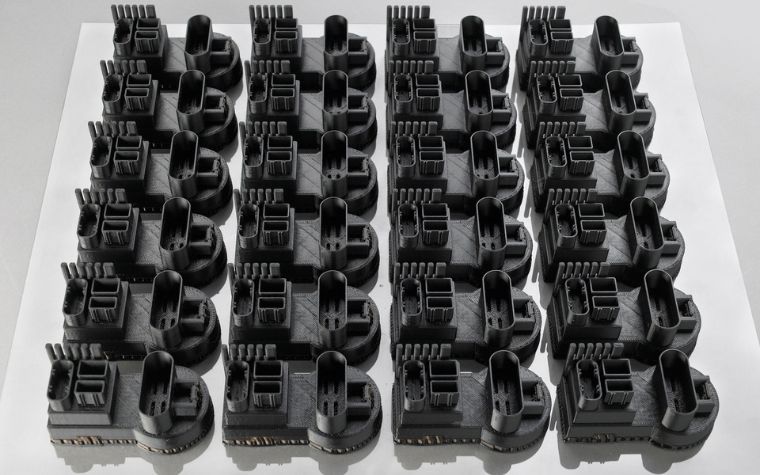TRENDS
Additive Manufacturing in Aerospace: The Key Themes of 2025

The eyes of the aerospace industry are locked on a sustainable future — and additive manufacturing is set to play a key role. From growing excitement for metal 3D printing to supply chain transparency and earning trust, we cover this year’s biggest talking points and what it all means for manufacturers.
Working toward a sustainable future
2035 may seem far away right now — 2050 even further — but like everything else in the aerospace industry, time flies. That’s why Airbus is wasting none of it in bringing its ambitious sustainability goals to the fore. Dubbed the Cabin Vision 2035, the aerospace leader is working towards a future of flying that prioritizes sustainability and comfort by leveraging digital processes and tools, bionic structures, and a circular design philosophy.
Its mission is based on pillars that include increased transparency of emissions, decarbonization, and reducing cabin waste by producing parts in line with circular economy principles.
Excitement grows for metal 3D printing
3D-printed polymers have become a common choice for low-criticality parts over the years — and now eyes are turning to metal. Metal 3D printing is increasingly the focus of standardization efforts, leading manufacturers like GKN Aerospace are proudly advertising their efforts, and, of course, we expanded our AM offer with our EN 9100 for metal certification. Many in the industry feel that this popularity will only continue as we gather more data, experience, and trust over time.
As Erik de Zeeuw, Market Manager for Aerospace at Materialise, puts it: “Low-criticality parts that need to be light, strong, and durable, such as seat bezels, housings, interior trims, or ducts, are particularly strong candidates. They often need to be repaired or replaced but in small quantities. These are requirements that align perfectly with key benefits of metal 3D printing, including the ability to have digital ‘on-demand’ stock for faster, more reliable sourcing, and cost-efficient production of small series parts.”


The importance of supply chain visibility
How additive manufacturing can alleviate industry concerns
As part shortages, delays, shipping costs, and sourcing issues continue to impact the aerospace industry, supply chain visibility remains top of mind for many companies. Among these challenges lies an opportunity for additive manufacturing to shine — such concerns are among the most common drivers for adoption.
The benefits additive manufacturing brings to supply chain management are definitely worth the investment:
- A single additive manufacturing supplier can supply a wider range of parts
- Short lead times keep MROs and OEMs on schedule
- Small series and one-off parts are affordable
- Designs are easy to update, and parts are printed on demand. No more warehouse costs or risk of obsolescence
- A digital inventory allows manufacturers to print locally, de-risking the supply chain by avoiding logistical issues
Scaling up to series production and the search for 'Unsung Hero' applications
As the industry searches for solutions to these challenges and additive manufacturing continues to prove its worth, more and more aerospace manufacturers have changed the way they look at the technology. No longer just a prototyping tool, but a fully-fledged production method for end-use parts. One-off prints transition into series production, especially when companies land on their 'Unsung Hero' applications.
These applications don't just rely on technical factors like complexity or obtainability; the economic factors matter, too. Choosing additive manufacturing for simple aerospace parts with sensitive lead times, for example, often yields greater commercial results than only considering complex components — helping to alleviate the other industry concerns is a welcome bonus.


Trust in AM
Additive manufacturing allowables, standards, and collaboration earn the trust of an industry
In any highly regulated sector, it can take time to introduce new technologies, materials, and ideas. The additive manufacturing industry has worked hard for more than a decade to earn the trust of the aerospace industry, and time and experience are paying off.
With proven standards driven by both aviation agencies and companies like Airbus, data transparency, and collaboration across the supply chain, additive manufacturing has matured and is now more widely accepted as a valuable production method for aerospace.
It’s a topic where Materialise is happy to lead the conversation. With more than a decade of valuable data to share and processes that aerospace companies highly value, we’ve already helped to set the bar high and drive this trust.
As Gert Brabants, Business Line Manager of Series Manufacturing at Materialise, puts it: “Our data shows we could reach the same quality five years ago as we did two years ago, and we’ll be able to do it next year as well. That's the big value. This is the type of data our customers need if we want them to trust additive manufacturing — whether it’s reliability, convincing the decision-makers, or just clearing the financial hurdle of testing to help them get started.”
Share on:
You might also like
Never miss a story like this. Get curated content delivered straight to your inbox.
